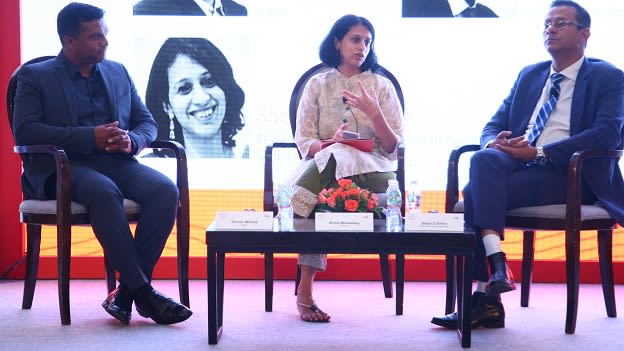Recruitment Tech In Action: Perspectives by users and investors

Talent acquisition is a part of human resources where the sheer plethora of technology is available, and the benefits it can have on an organization are humungous. It is necessary to keep track of the latest technology available in the market, and how it can help your company because the choices today are infinite when it comes to technology in the space of talent acquisition.
Shruti Bharadwaj, Head- HR Services Delivery, South Asia, and North Asia, Unilever, spoke about one part of the technology in recruitment which benefited her organization greatly over the last four to five years.
Digitization in recruitment is crucial as it has reduced pressure on the shoulders of the managers and HR. The organization can view, several candidates, before they hire, and digitization requires few resources and also helps set up interviews with a different approach. Organizations need to adopt a mindset of change so that they can avail all the benefits that technology can provide. Organizations will benefit a lot by pre-recording questions for candidates which they can answer at a time which is convenient to them.
Digitization in recruitment
Digitization in recruitment helps the candidate to have a great experience, eliminates any unconscious biases and reduces the time of hiring by the manager leading to efficiency and increased productivity. The organization will also be able to save time usually spent in the process of scheduling and co-coordinating, considering that in today’s day it is a task to match peoples calendar followed by a hectic schedule. Digitization of recruitment comes in handy at the initial stage of the recruitment process, as it helps to eliminate resumes that are not fit for the job description and test some fundamental skills before a face to face interaction.
An essential aspect before the interview stage is dealing with the thousands of applications that flow in from multiple sources. Technology can play a huge role in enabling the recruiter to make sense to the numerous applicants’ data and arrive at a decision on which applicants they think will be the perfect match for their company.
Shruti Bharadwaj says, “While there are fantastic technology options to address every area in recruitment, not all technology integrates very well with software and with the company”. Hence, what could be the only drawback of using Artificial Intelligence and software is integration.
But, Satya Sinha says that “Using Artificial intelligence helps to churn data that the organization may already possess, instead of paying external portals to churn this data”. It also helps to give the recruiter a more precise picture and potential of the applicants and also makes the job of a recruiter easier. Digitization does not take away the focus from a recruiter’s job, but instead, it is an enabler and gives the recruiter power, and makes work more efficient. Satya also added that there have also been suggestions to add an Emotional Quotient (EQ) to Artificial intelligence so that the recruiter can make a more informed decision.
Speaking on what happens after the selection process, Shruti Bharadwaj spoke on how the company needs to work on the face to face interviews. "Companies can enhance the use of technology beyond a standardized set of pre-recorded questions to also test literacy, necessary communication skills, basic manufacturing know-how, etc.”
Digitization and AI benefit the candidate and improve the experience of interviews as the shortlist is based on far more rich and objective information, so there is a lot more the candidate can share, apart from just a resume. Companies will find that with digitization, they can interact with almost double the amount of people they would usually communicate with on face to face basis without a shortlist. Which in turn increases conversion ratios of an organization, meaning the number of people who are digitally shortlisted, called for a face to face interaction and then who are further offered the job, is much higher than, if they are called for a face to face interaction without digitized shortlisting.
The four-step approach
Taking the discussion further, Dennis Wilfred explained “The four-step approach” and how it can help every company. The first approach is how much customization is to be done for India’s organization. The second approach is looking at things from a functionality perspective, globally, versus in India. The third is visibility and looking for applicants and the skill set they have acquired. The final and most important is implementation.
If companies have a system which has data right from the first date of joining till the exit of an employee, this will help understand the type of employees currently working, and the target employee’s companies are looking to hire.
Dennis added, “It may be difficult to decide which system to go with, but companies need to identify a system, not just for today, but also how they can customize it for the future”. Every company has different needs, and they should look for systems to which they do not have to add on to massively.
He concluded,"One should look for systems that they can use and customize for the future, and for this, it is necessary to have a bigger picture in mind when one is identifying a system."











